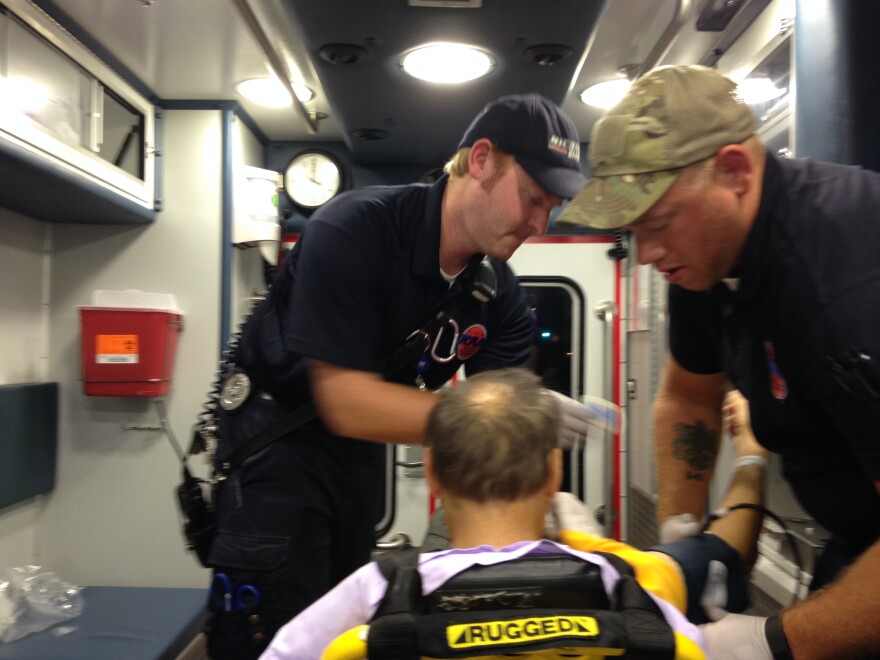Richmond is known for its historic capital building, its stately cemeteries, a world class art museum and, now, a stellar ambulance service. The National Association of Emergency Medical Technicians voted to honor Richmond for innovation.
“Paramedics. What’s the address you need an ambulance to come to? Okay, tell me exactly what happened.”
Each year, more than 60,000 people in Richmond require an ambulance. That’s a big number for a city with fewer than 220,000 residents - but Danny Garrison, director of communications, says the rush hour brings a much bigger crowd.
“During the business day we grow to over a million - the business district, the fact that we’re the capital city, we have four universities located within the city, and we have two major highways.”
Even using that bigger number, Richmond’s Ambulance Authority is one of the busiest, per capita, in the nation - and one of the most creative.
For years, management has been tracking where their calls come from, and they can now predict future demand - so rather than put paramedics and trucks at a central location or fire station, ambulance crews are stationed on street corners closest to anticipated calls.
“So that means two things. One -- our response time is very short because we’ve actually plotted where they’re going to be, and two -- it’s very good for safety, because we’re not running on emergency sirens for any significant length of time, so that’s safe for our crews and everybody else, so it’s all about using the information to be at the right place at the right time.”

That’s Rob Lawrence, the authority’s chief operating officer. He says the average response time is under 6 minutes. He came to Richmond to learn about its advanced techniques - took them back to Britain, and was later invited to join the team here. He accepted, in part because he liked this organization’s philosophy.
“You look at the board above my head, it says, “If we do what we always did, we’ll get what we’ve always got.”
Which explains why drivers like Wes Wampler - my host for the evening - get special training and guidance. Again, Rob Lawrence.
“We have what could equate to be a black box in each vehicle that monitors their behavior - that actually sets the parameters for the vehicle, so if they start to accelerate or brake too hard, there’s an alarm that tells them, ‘You’re exceeding the tolerance of the vehicle.’ The operator operates the vehicle within the limits that we set.”
The authority also teaches paramedics and EMTs how to protect themselves from injury, and it tracks the condition of its vehicles, again using past data to predict future problems. Chip Decker is the authority’s CEO.
“You can’t, especially in this business, wait for the failure.”
Solar panels on the roofs keep batteries fully charged without straining the engine, improving gas mileage, and the men and women who do the work are frequently consulted on policies and procedures.
“It’s a tough job. It’s a busy job. I mean they go out and they come back 12 hours later, and they work hard in between. The important thing is to pay attention to them - is to always ask for their input, and make them have a part in the decisions that are made, especially the ones that affect them.”
Case in point -- the paramedics and EMTs helped design their own uniforms with wicking fabric for hot days and plenty of pockets year round. The authority is one of the first in the nation to administer plasma to patients who need it - rather than waiting to reach the hospital, and patients who suffer cardiac arrest in Richmond are far less likely to suffer neurological damage than the national average.




